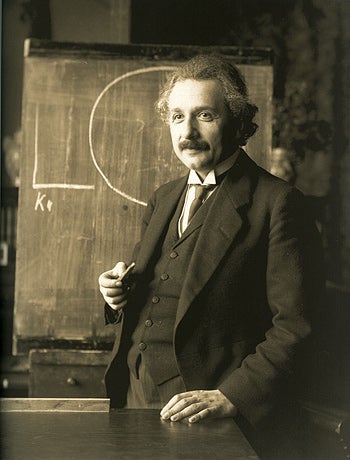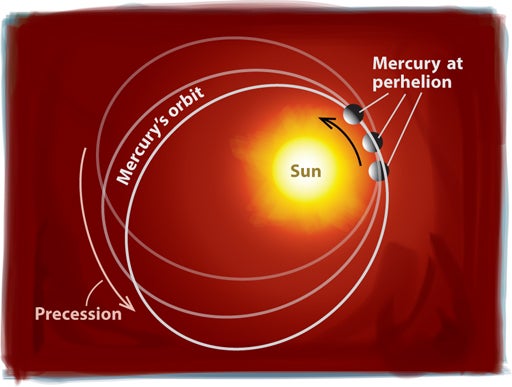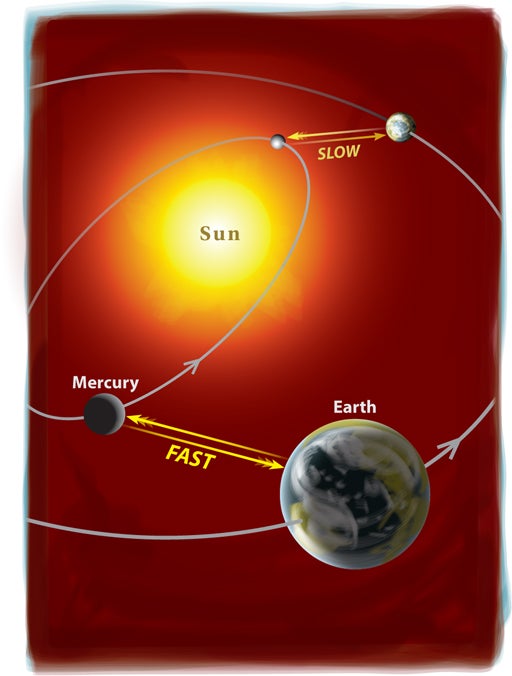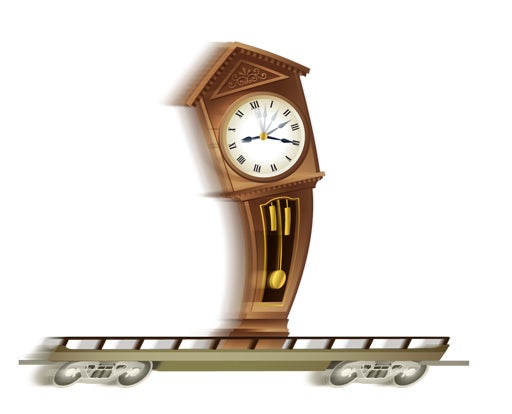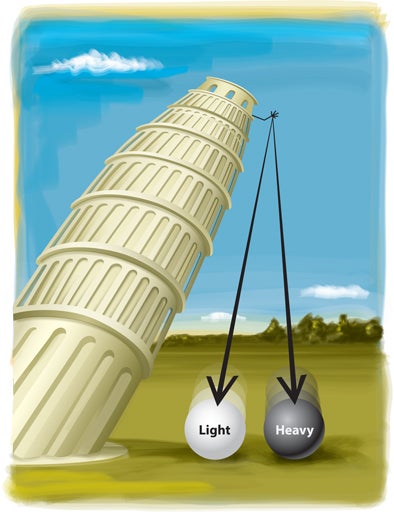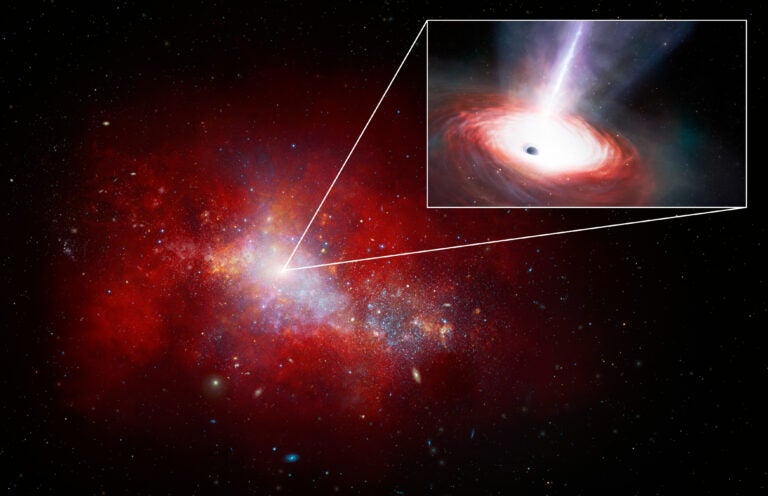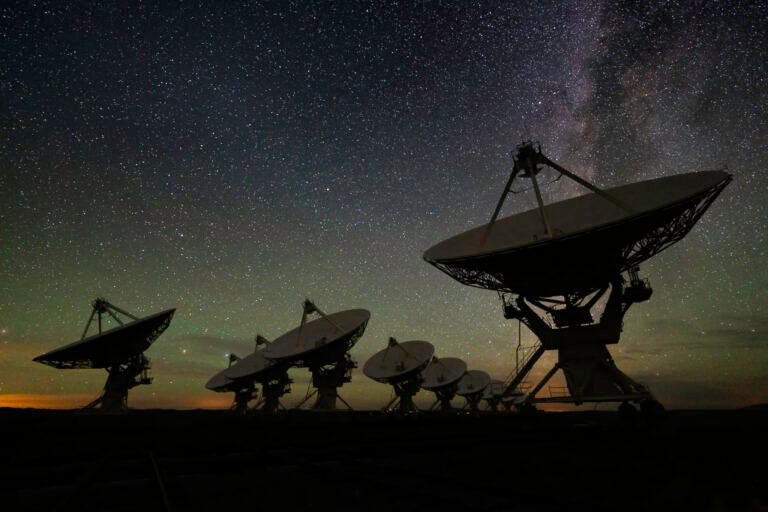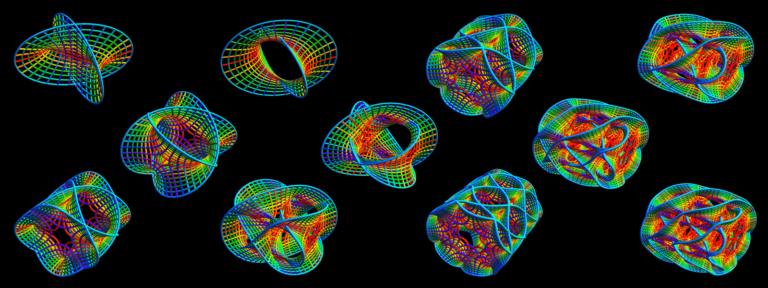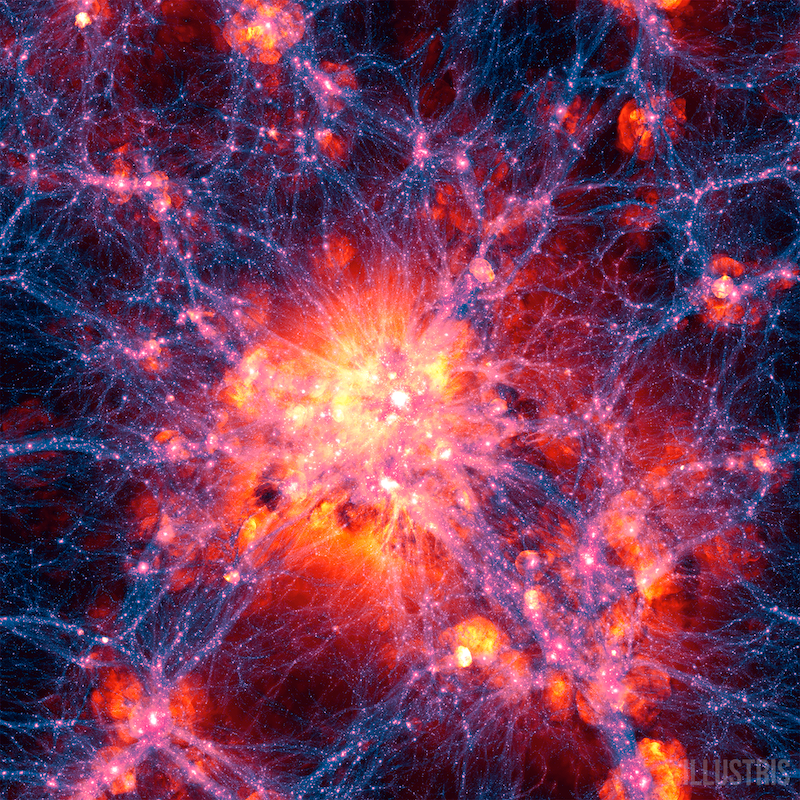One hundred years ago, a young physicist presented a paper to the Prussian Academy of Science — a paper that we now recognize as symbolizing the birth of general relativity. By this time, Albert Einstein was a recognized figure in the physics community, with a prestigious academic appointment in Berlin and the enthusiastic support of luminaries like Max Planck and Marie Curie.
What a difference from that day 10 years earlier, when an obscure examiner third class in the Swiss patent office published new ideas that shook 20th-century science. In 1905, young Einstein wrote four papers in what physicists now refer to as the “Annus Mirabilis,” or Year of Miracles, each of which could have garnered a Nobel Prize. Two of them — special relativity and the mass-energy equivalence — proved key to his theory of gravity. The others explained the physical reality of atoms and the photoelectric effect, which set the foundation for quantum mechanics. This last paper was the basis for Einstein’s Nobel Prize in 1921.
But relativity continues to test the limits of physics more than any other discovery Einstein made.
Relativity is based on one powerful idea: Every observer in the universe sees the same laws of nature in operation. For example, a friend drives by and throws a ball in the air and then catches it when it falls. Your friend sees the ball go up and down while you see it travel in an arc, but you both agree that Newton’s laws of motion govern the ball’s path. It’s a different description of events but with the same laws operating.
Special relativity says the laws of nature are the same in all frames of reference moving at a constant velocity. General relativity says the laws are the same in all frames.
If your friend’s car is moving at a steady speed, the laws of special relativity apply, but if the car is accelerating, we have to apply general relativity. Most of the weird results we know about relativity — the fact that moving clocks slow down, moving objects shrink in the direction of motion and get more massive, and even the best known scientific equation, E=mc2 — follow from the principle of special relativity. Generations of physicists have tried and tested both ideas.
And general relativity’s fundamental tenets have been proven right again and again. NASA used its Gravity Probes A and B to confirm how a clock ticks slower in orbit than on Earth and that our planet’s gravitation drags space-time with it.
But even after 100 years, physicists are still trying to understand the far-reaching implications. Scientists are in the middle of a sweeping search for the gravitational waves Einstein predicted in 1916 as a result of his general theory of relativity. And one of relativity’s biggest tests still lies ahead. Theorists haven’t yet tied Einstein’s successful predictions about the large-scale universe to quantum mechanics — the best theory of physics at subatomic scales.
Einstein invents space-time
To a physicist at the opening of the 20th century, the phrase “laws of nature” had a specific meaning. It meant (1) Newton’s laws of motion, which describe the motion of any object in the universe; (2) Maxwell’s equations, which describe electricity and magnetism; and (3) the laws of thermodynamics, which deal with energy and the order in physical systems.
It’s actually the second of these that matters as far as relativity is concerned. The reason is simple. James Clerk Maxwell (1831–1879), after whom the equations are named, was a master at the forefront of mathematics of his day.
We can understand a lot about relativity by using a device called a light clock to define our basic unit of time. This device holds a flashbulb, mirror, and photocell. The “tick-tock” consists of the flashbulb going off, the light moving up and bouncing off the mirror, and then the light traveling down to the photocell. When it arrives, the photocell triggers the flashbulb, and the whole process is repeated.
This may seem like a strange kind of clock, but look at it this way: By adjusting the position of the mirror, we can make the light clock tick at the same rate as any other clock we want to use. For the record, I always picture a tall grandfather clock next to my light clock, but you can picture any kind of clock you like. Thus, any result we derive for a light clock will apply to any other kind of clock as well.
Now imagine an experiment. We have two identical light clocks — one on the ground and the other on a moving railroad car. Imagine that we set things up so that both flashbulbs go off as the moving clock passes the one on the ground. What will an observer see?
As far as the ground observer is concerned, the clock on the ground is behaving normally — the light travels up to the mirror and back and the clock ticks along. When the ground observer looks at the moving clock, however, she sees something very different. In the time it takes the light to move up to the mirror, the train has moved a certain distance.
Consequently, the ground observer sees the light in the moving clock traveling on a slanting path. The same thing happens as the light comes back to the photocell, so the net result is that the ground observer sees the light in the moving clock traveling in a sawtooth pattern.
In other words, as far as the observer on the ground is concerned, the light in the moving clock travels a longer distance than the light in the clock on the ground. If light travels at the same speed in both frames of reference, then it will take the light in the moving clock longer to finish its path than it takes the light in the clock on the ground to do the same thing. As far as the observer on the ground is concerned, the moving clock ticks more slowly. — J. T.
He realized that four of the basic laws of electricity and magnetism constituted a complete mathematical description of these phenomena. After adding a missing piece, he showed that the equations predicted a strange type of wave — a wave that could travel through a vacuum by tossing energy back and forth between electric and magnetic fields. The equations also predicted the speed of these waves to be approximately 186,000 miles per second (300,000 km/s) — a number we recognize as the speed of light.
Light was, in fact, one of those strange waves Maxwell found in his equations. In the end, he showed that all waves in what we now call the electromagnetic spectrum — waves that range in size from radio waves, with wavelengths larger than the diameter of Earth, to gamma rays, with wavelengths smaller than the nucleus of an atom — were the same thing as visible light itself.
Stretch a light wave out, and you have a microwave. Scrunch it up, and you have an X-ray. All of these waves move at the same speed — what we call the “speed of light” and denote by the letter c. More importantly, this speed is actually built into Maxwell’s equations.
Thus, if the principle of relativity is really true, and if all the laws of nature (including Maxwell’s equations) are really the same in all frames of reference, then the speed of light has to be the same for all observers.
This is really a weird statement. It says, for example, if a friend is driving by you in a car at 60 mph (100 km/h) and shines a flashlight, both of you will see that light traveling at 186,000 miles per second. To emphasize the strangeness, this means that standing on the ground, you will not see that light moving at 186,000 miles per second plus 60 mph, as you might expect, but at 186,000 miles per second.
Einstein was the first to realize that the only way to resolve this dilemma was to change the way we think about space (i.e., distance) and time. After all, we arrived at the dilemma by thinking about velocities, and velocity is just distance divided by time. Change our ideas about space and time, Einstein argued, and these sorts of problems could go away.
The black hole tool of choice
All of which brings us to Einstein’s talk at the Prussian Academy. The mathematics involved is more difficult than that in special relativity. The fact that it took a man of Einstein’s ability almost 10 years to work through it should testify to that fact. And general relativity is still our best theory of gravitation.
To see why this should be so, imagine a ship traveling in deep space. If the ship is moving at a constant velocity and a passenger holds a ball out and lets it go, the ball will simply stay where it was released. If, however, the ship is accelerating, the situation will be different. The ball will continue to move with the velocity it had when it was released, but the ship will be speeding up. From outside the spaceship, we would say that the floor came up and hit the ball. To the passenger, however, it would appear that the ball fell.
In fact, if the ship were accelerating at 32 feet per second squared (9.8 m/s2), the ball would appear to fall in the same way it would on Earth’s surface. Thus, once acceleration enters the picture and general relativity takes over, we can describe the effects of gravity in a new way.
Because of this fact, general relativity has become a tool of choice for describing massive objects. Without it, it would be impossible, for example, to talk about the universe in the first fraction of a second after the Big Bang, back when matter was packed together in unimaginable densities. And black holes — arguably the weirdest objects in existence — couldn’t be described at all.
The basic principles of general relativity can be stated quite simply: The presence of matter distorts the fabric of space and time, and objects travel on the shortest path in that distorted space-time.

